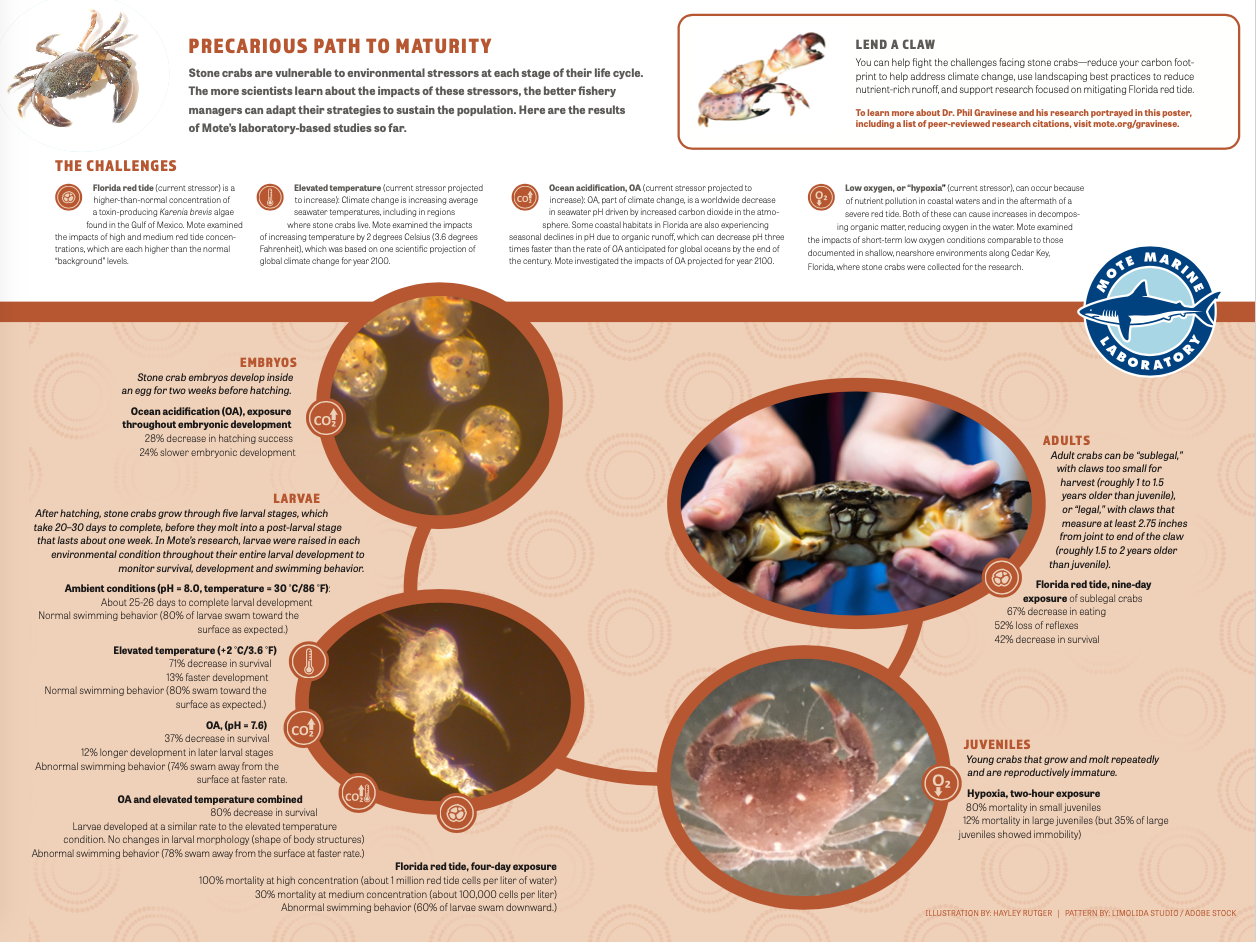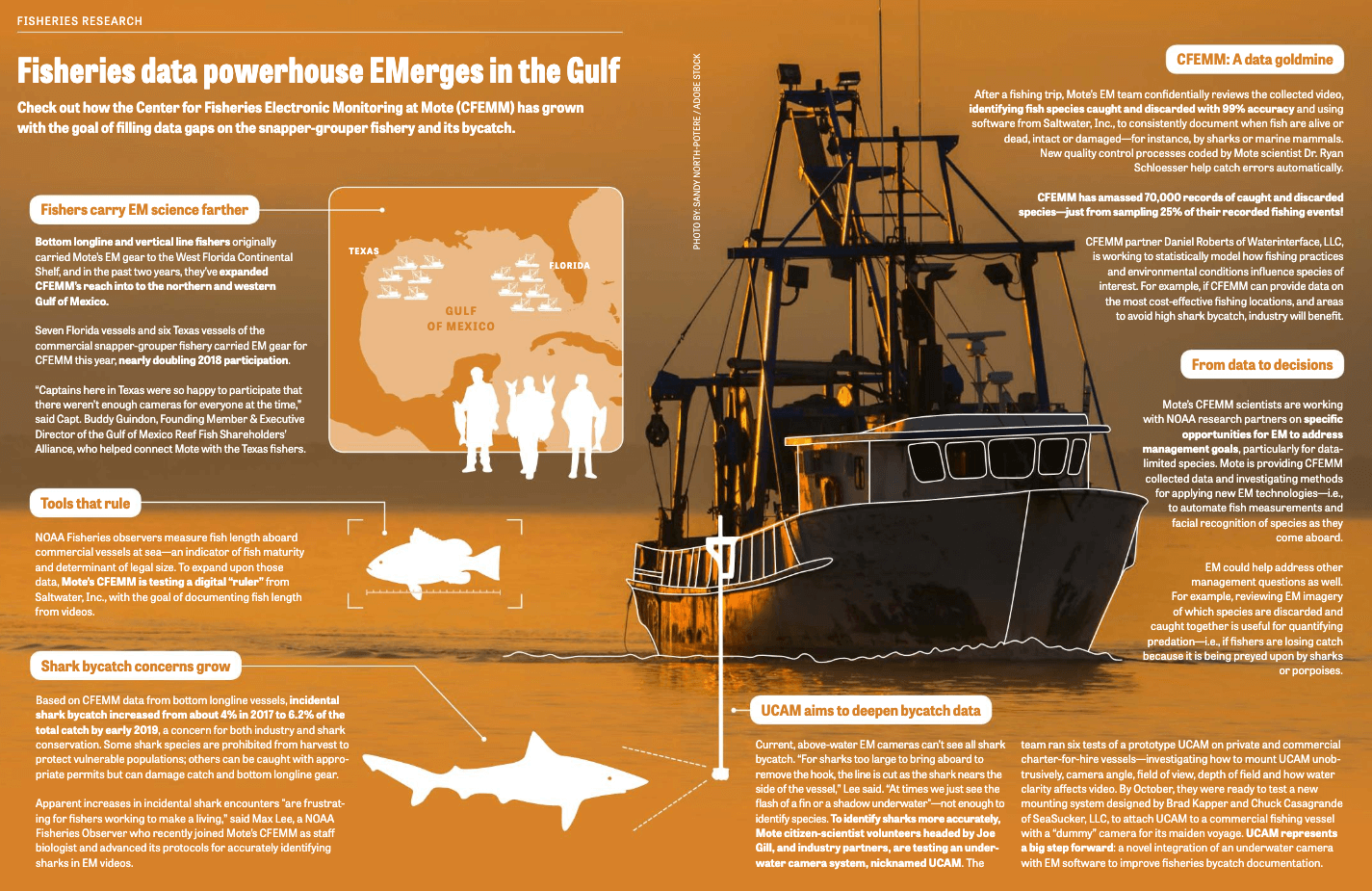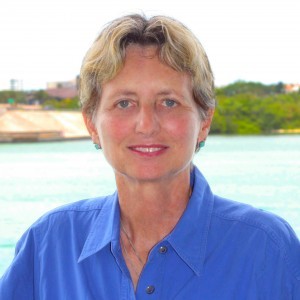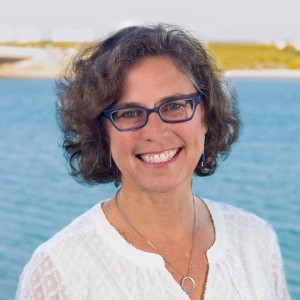Impacts: World-class research at Mote
Sustaining fisheries that sustain livelihoods
Fisheries are taking hard hits: Florida red tide mortalities, climate change impacts on some species, overfishing of approximately one-third of fisheries worldwide—and more. Losses of sportfish affect economies, while growing supply gaps in food fish—often the lowest-cost animal protein worldwide—disproportionately affect the poor. This year, Mote helped surmount these challenges with science and technology that kindle optimism for the future of fisheries.
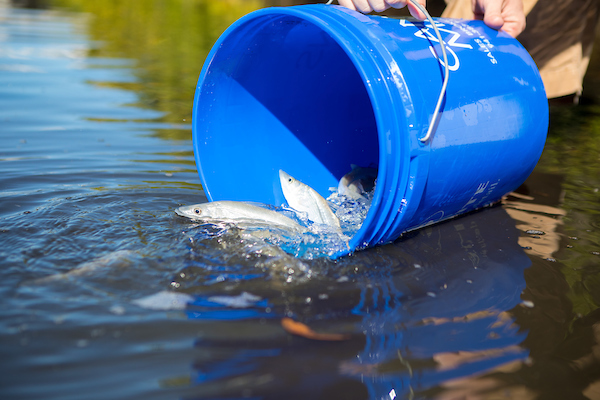
-
In late 2018, Mote partnered with Coastal Conservation Association of Florida (CCA) and FWC to help the sportfish common snook rebound from Florida red tide impacts, inviting anglers and businesses to “Adopt-a-Snook” by donating to scientific fisheries enhancement. This program enabled Mote to release 5,169 hatchery-raised snook into upstream habitats that would contribute to areas hit hard by red tide.
Snook were spawned and raised at Mote Aquaculture Research Park (MAP) in eastern Sarasota County in 100% recirculating systems (recycling all their salt water), and scientists in Mote’s Fisheries Ecology & Enhancement Program coordinated the effort to tag each fish with a passive integrated transponder (PIT tag), release the fish strategically in May, June, and July 2019 in southwest Florida and then monitor them after release using antenna arrays along the shore that detect the PIT tags of individual snook in range.
As of the end of January 2020, Mote scientists have received data on 1,935 released fish from the antenna arrays, and some of the early released fish had already been seen for more than 150 days. At least one year of monitoring data will be needed for scientists to accurately assess the impact of the stocking effort to the local snook population.
This coordinated, targeted response to a snook mass-mortality event was a culmination of months of preparations and years of aquaculture and fisheries enhancement research by Mote, along with support from FWC and philanthropic sources, whose continuing support contributed to the release of an additional 1,934 snook in Sarasota Bay this fiscal year. In total, the 7,103 snook released represents the most snook stocked over a year in southwest Florida since 1999, an exciting prospect for effective, responsible stock enhancement through sustainable aquaculture.
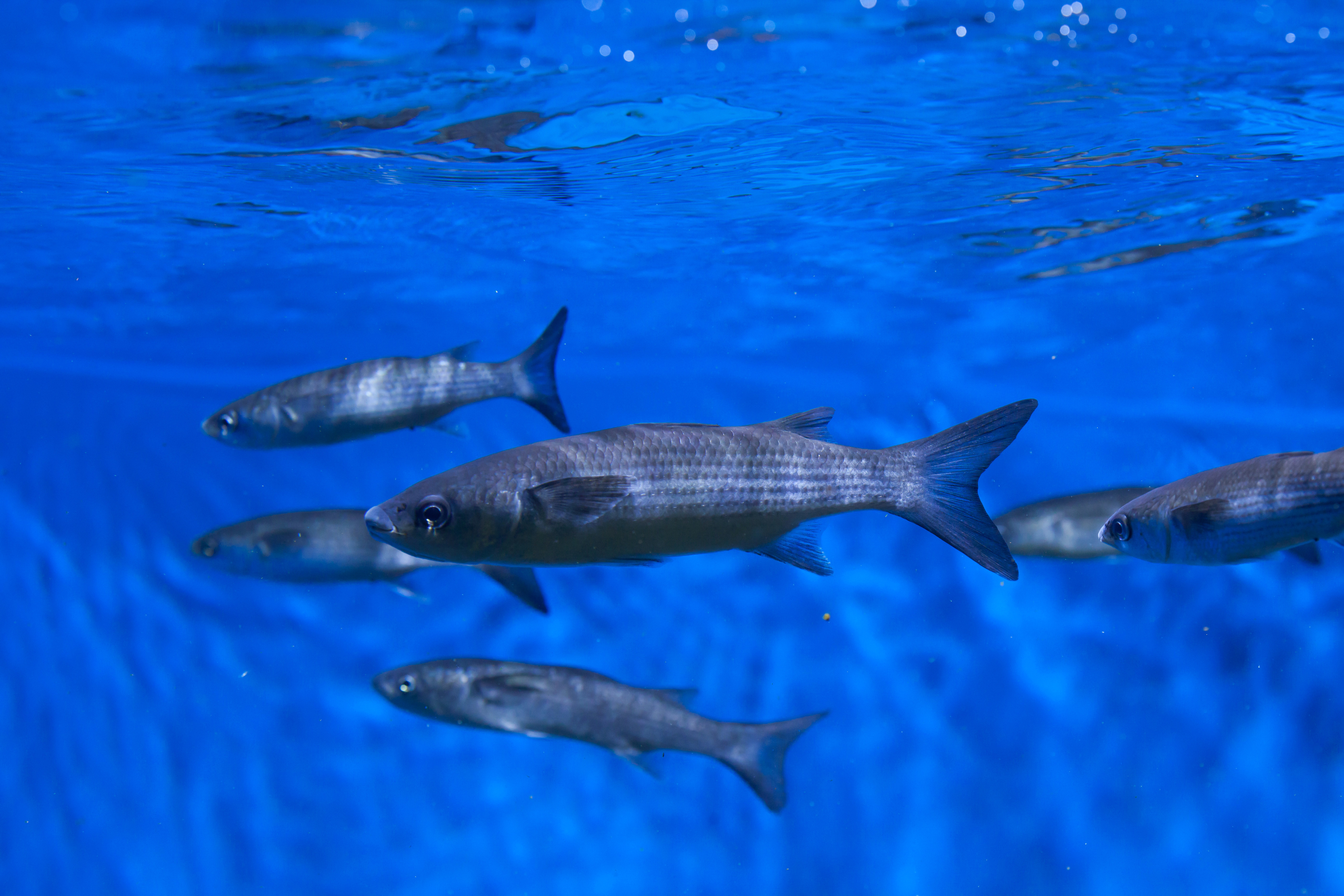
-
Mote is leading responsible, fish-stock enhancement efforts on the other side of the world too. In December 2018, Mote led a training course and planning workshop in Aqaba, Jordan, for the USAID-MidEast Regional Cooperative project "Stock Enhancement and Production of Grey Mullet Fry—a Sustainable Choice." The workshop included biologists and students from project partner countries: Israel, Morocco, Tunisia, Algeria, Egypt and Jordan.
Mote’s Dr. Ken Leber is the leader of this project, which is focused on transferring striped mullet aquaculture and stock-enhancement technology to the partner countries. The ultimate goal is for the technology to be used to help conserve wild mullet populations in the Mediterranean Sea by providing an alternative to the persistent overharvest of wild baby mullet to stock lakes in Egypt and the Sea of Galilee in Israel. These lakes are stocked to support subsistence mullet fisheries. The current practice of harvesting large numbers of wild juvenile mullet to stock the lakes is depleting wild mullet in the Mediterranean.
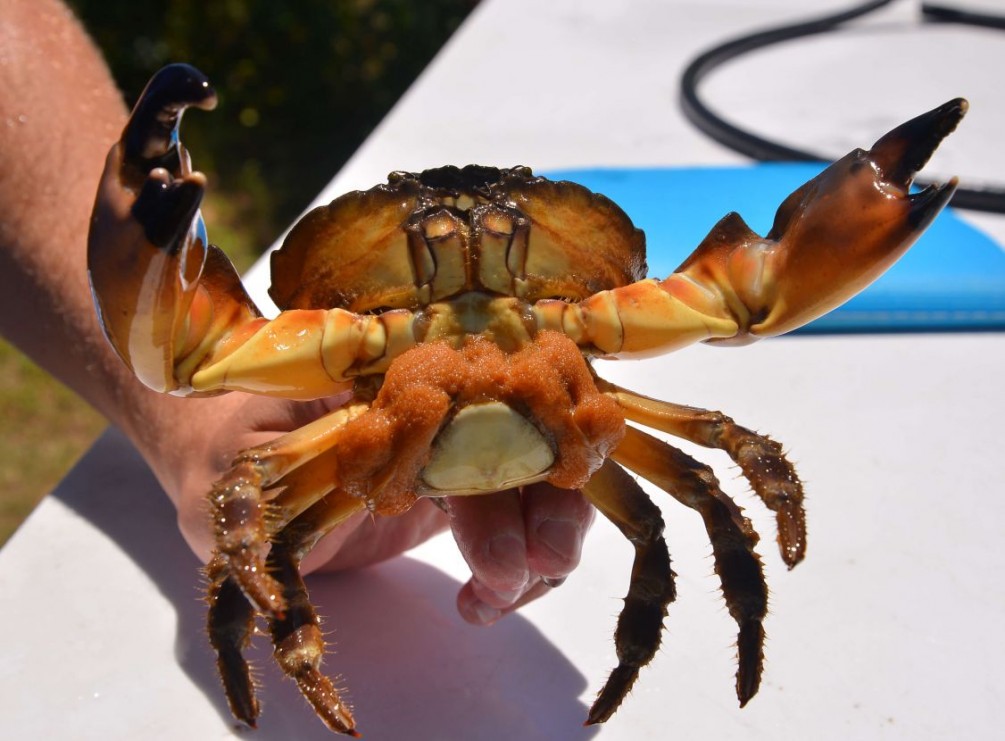
-
Mote scientists published a peer-reviewed, laboratory study demonstrating that high and medium concentrations of Florida red tide caused 100% and 30% mortality in stone crab larvae, respectively—illuminating one of several stressors affecting this declining fishery.
In this project led by Mote Postdoctoral Research Fellow Dr. Phil Gravinese, Mote scientists and Pitzer College partners aimed to better understand how newly hatched larvae might be affected by a bloom of Florida red tide persisting into the stone crabs’ summer reproductive season, as did the severe bloom from late 2017 to early 2019. The study was supported by grants from The Steinwachs Family Foundation and The National Science Foundation Research Experiences for Undergraduate program.
Mote scientists tested the survival of larvae hatched from 15 independent broods of stone crab eggs. They randomly assigned some larvae from each brood to tanks with a toxic strain of the Florida red tide organism Karenia brevis in high concentrations (1 million or more cells per liter of water) and medium concentrations (about 100,000 cells/liter), assigned others to tanks with a low-toxin strain of K. brevis in high and medium concentrations, and assigned the control group to tanks with seawater only.
While the low-toxin red tide strain didn’t have significantly different effects than seawater alone, the high-toxin red tide strain did. After 48 hours, the larval survival decreased 93% amid high concentrations of the toxic K. brevis and 24% amid medium concentrations. After 96 hours (four days) those decreases were 100% and 30% relative to the control group. About 90% of larvae in the control group swam upward, as they would be expected to do in the wild. However, amid high concentrations of toxic red tide, 60% of larvae moved downward.
In 2019 Mote also launched a project examining which coastal habitats might help stone crabs survive another stressor—intensifying ocean acidification (OA: decreased water pH occurring with climate change)—with a new, competitive grant from Tampa Bay Environmental Restoration Fund.
Mote’s previous research has shown that stone crab eggs brooded in low pH water mimicking future OA conditions were 28% less likely to hatch than eggs raised in “normal” (ambient pH) seawater. Some stone crab broods (groups of eggs), however, were more tolerant of the OA conditions than others. What’s their secret?
That question will drive Mote’s new, two-year, research and education project supported by the Tampa Bay Environmental Restoration Fund (TBERF) grant. Specifically, Mote scientists will investigate whether stone crab eggs tolerate OA better if their mothers have been living in habitats where the pH naturally goes up and down more frequently than in habitats that experience less pH variability. They hypothesize that stone crabs exposed to more pH variation might be “toughened” against OA, perhaps building resilience over multiple generations and possibly allowing the species to acclimate to extremes in pH.
-
Mote’s research from the past three years has coalesced into an intriguing picture of multiple stone crab stressors, including climate change (OA and increased temperature), coastal acidification from organic runoff, low oxygen (hypoxia) and red tide.
Click thumbnail to view infographic.
-
This year, the new Center for Fisheries Electronic Monitoring at Mote (CFEMM) formalized Mote’s efforts to improve monitoring of the Gulf of Mexico’s commercial, snapper-grouper fishery. Improved monitoring is vital for sustainably managing seafood resources, and in turn, supporting fisher livelihoods. This year, fishing-vessel participation in CFEMM nearly doubled, Mote documented caught and discarded fish with 99% accuracy by reviewing EM video confidentially, and CFEMM tested innovative underwater cameras for documenting unintentionally caught sharks (bycatch)—a challenge for fisheries and shark conservation.
Click thumbnail to view infographic.
Many stock assessments of Gulf fisheries are data-limited, due to the challenge of monitoring vessels effectively, consistently and affordably.
With the goal of filling key data gaps, Mote’s CFEMM deploys EM gear on commercial, bottom longline and vertical line vessels of the snapper-grouper fishery, collecting video and data on hard drives and later analyzing it confidentially to document fish species caught (including non-targeted bycatch), numbers kept and discarded, fish condition on arrival and discard, and details on when a vessel sets or hauls fishing gear or travels between fishing grounds and port.
This year, CFEMM expanded its efforts by testing a digital “ruler” from Saltwater, Inc., with the goal of documenting fish length from videos. Additional software from Saltwater, Inc., is used to consistently document when fish are alive or dead, intact or damaged—for instance, by sharks or marine mammals.
Through years of EM research by Mote and partners, CFEMM has amassed 70,000 records of caught and discarded species—just from sampling 25% of their recorded fishing events! CFEMM staff and partners at Waterinterface, LLC, are working to statistically model how fishing practices and environmental conditions influence species of interest. For example, CFEMM is working to provide data on the most cost-effective fishing locations, and areas to avoid high shark bycatch, so the industry will benefit.
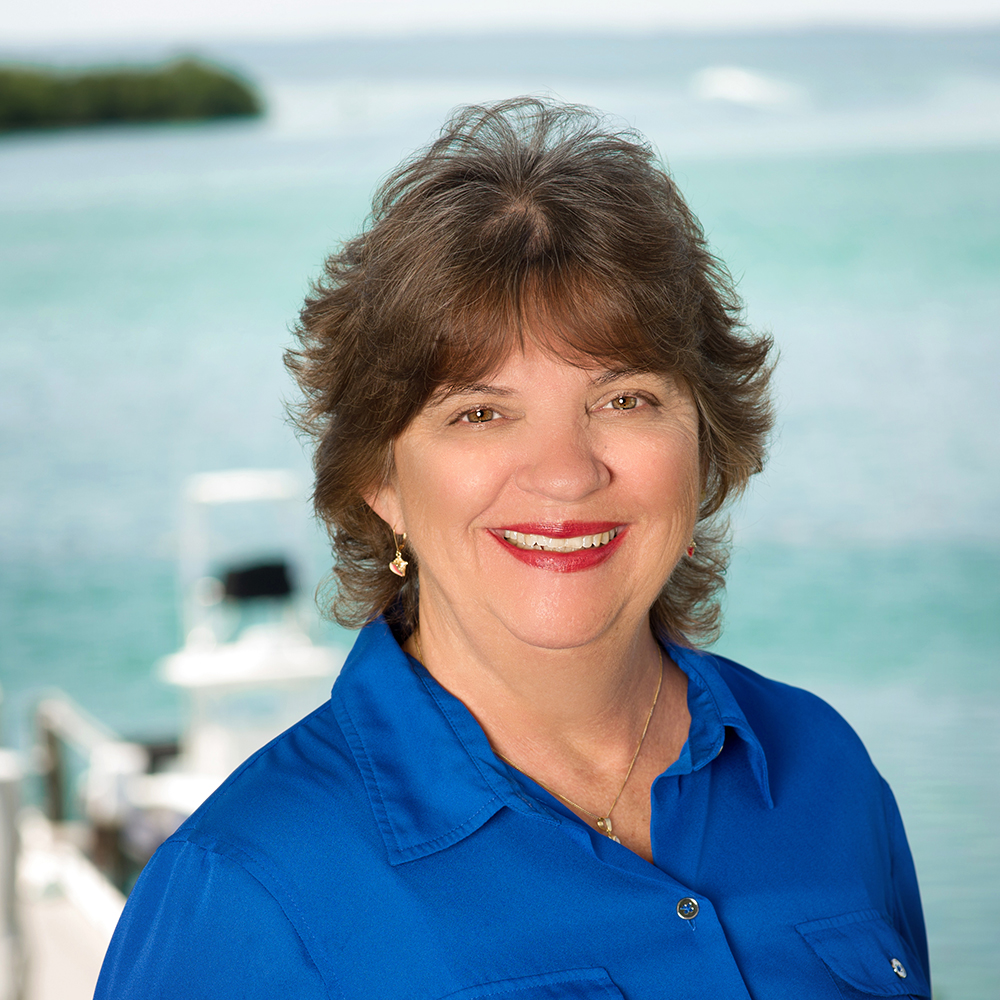
-
Mote’s Dr. Kevan Main was appointed to the Technical Advisory Group of the Aquaculture Stewardship Council (ASC). ASC manages the world’s leading certification and labeling program for responsible aquaculture (farming animals and plants in water).
Main leads research efforts to increase much-needed supplies of safe, sustainable, U.S.-farmed seafood. Today, approximately 91% of seafood consumed in the U.S. is imported.
At Mote, Main serves as a Senior Scientist and Manager of the Marine & Freshwater Aquaculture Research Program. She directs the 200-acre Mote Aquaculture Research Park in eastern Sarasota County, Florida, a hub for aquaculture (fish farming) research and technology development. In 2016 she was recognized by the White House Champions of Change program for her outstanding work on sustainable seafood. Main has an extensive publication record, including seven books and more than 90 peer-reviewed scientific publications. She has served as the President of the World Aquaculture Society and has more than 30 years of experience in the field of aquaculture of tropical and subtropical fishes and invertebrates.
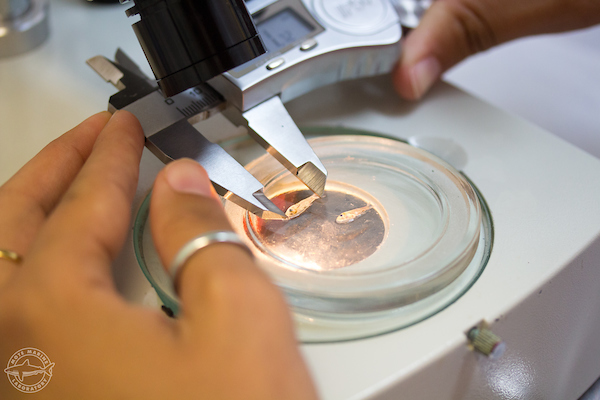
-
In 2019 Mote scientists published the first peer-reviewed study highlighting the benefit of adding two probiotic strains of Bacillus bacteria during the rearing of common snook in aquaculture. Snook larvae that received the probiotic in their feed and aquatic environment had 2.5 times higher survival rates than those that did not.
Probiotics are bacteria that help the well-being of the host animal, in part by protecting against bacterial pathogens. Probiotics can produce enzymes for better digestion, modulate the immune system and enhance the immune response against harmful bacteria. Today, the use of probiotics in commercial aquaculture aims to improve fish survival, growth and reproduction through addition to the water and/or feed.
The new peer-reviewed study, published in the Nature Research journal Scientific Reports, also revealed that those fish given the probiotic early in the rearing process better resisted the stress of being transported as juveniles. High mortality in the early stages of fish development is a bottleneck in the commercial-scale production of many marine fish species. Identifying beneficial bacteria strains that improve survival during this critical developmental period and decrease stress during transport has tremendous potential for commercial application in aquaculture.
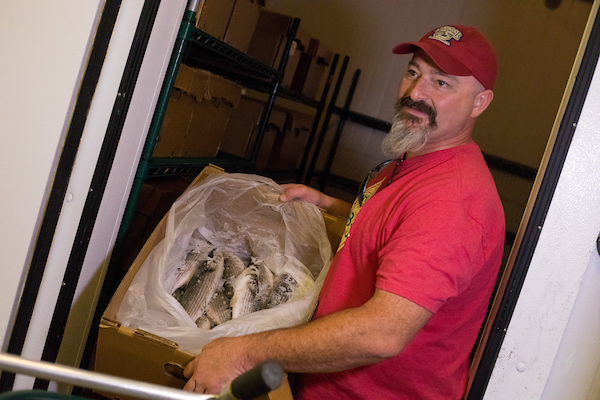
-
In 2019, Mote research supported by Gulf Coast Community Foundation revealed that seafood farmers can raise fish successfully on a diet made with leftover, wild-caught mullet: a discovery that can improve sustainable seafood farming and add value to a major Florida fishery.
Study partners fed farmed fish a newly developed diet made with whole, leftover striped mullet—a species fished to produce valuable bottarga (cured roe), leaving behind meat and oil that are underutilized. In the study, the mullet-based diet supported excellent growth, health and survival in farmed fishes—nourishing a freshwater fish species as effectively as a commercial diet, and nourishing a saltwater species more effectively than a commercial diet. The success of the feed trials was not measured by simply the best growth and performance; the real success was that the mullet-based diets performed as well as, or better than, the standard commercial diet and a menhaden-based diet.
Aquaculture supplies more than half the planet’s seafood and must continue growing because many wild fish stocks are overfished. One big challenge is how best to feed aquacultured fishes—many of which eat other fishes in the wild. Commercial aquaculture diets usually contain some wild-caught fish meal; finding alternative protein sources is increasingly important.
To do that, Mote launched its mullet-based feed study in 2016, after competing successfully for funding from Gulf Coast Community Foundation’s 2015 Gulf Coast Innovation Challenge.
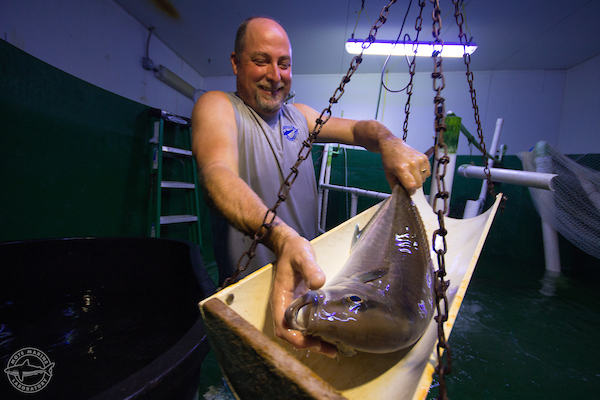
-
Mote advanced hatchery technology to produce the Gulf of Mexico’s native almaco jack sustainably in land-based recirculating systems. Mote’s independent research, funded by Sea Grant and Gulf States Marine Fisheries Commission, will ultimately produce juvenile almaco jack through land-based aquaculture for a private company’s pilot test of offshore aquaculture in the species’ native range.
Increasing the supply of locally cultured almaco jack in the Gulf of Mexico will give consumers a safe, secure, and sustainable source of seafood produced in the U.S. The U.S. has lagged far behind other countries in developing a marine aquaculture industry, which has created a major seafood trade deficit of $14 billion annually—second only to that for oil. This deficit threatens to undermine seafood security at a time when U.S. seafood consumption is increasing.
To address this challenge, Mote researchers are taking novel approaches to enable domestic production of many saltwater finfish species, including ensuring that adequate supplies of fingerlings (juvenile fish) are available to the emerging, U.S. aquaculture industry..
Photos by: Conor Goulding, Vladimir Wrangel/Adobe Stock, Dr. Phil Gravinese
